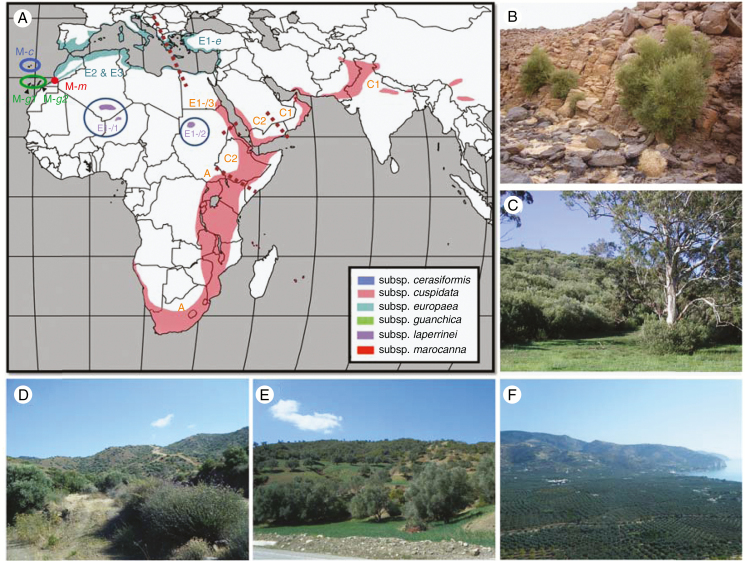Fig. B1.
The olive complex (Olea europaea L.). (A) Native distribution of wild olive relatives (according to Rubio de Casas et al., 2006). Six subspecies are currently recognized (Green, 2002). The plastid DNA data set used to define lineages (and sub-lineages) is available in Supplementary Data Table S2 and Fig. S2. Dotted lines indicate approximate limits of the distributions of two adjacent plastid lineages (indicative for putative secondary contacts). Note that lineages E2 and E3 are admixed in western Oleaster populations (subsp. europaea); (B–F) Various habitats with wild or cultivated olives in native and invasive ranges. (B) Ramets from the same stump of a Laperrine’s olive at Akerakar, south Algeria. Subspecies laperrinei persists in very dry habitats (mean annual rainfall <100 mm); (C) African olive invasion at Mt Annan, NSW, Australia (photo credit: Peter Cuneo). Subspecies cuspidata is highly invasive in east Australia, north New Zealand and Hawaii. It usually colonizes disturbed habitats, such as abandoned pastures in particular (Cuneo and Leishman, 2006); (D) scrubland dominated by oleasters at Lageia, Cyprus; (E) Traditional agrosystem with cultivated olives in northern Morocco (Chefchaouen, Rif). Annual crops (here, wheat) are usually cultivated between trees; (F) monoculture of olive trees near Mattinata, Puglia, Italy. A small number of genotypes (usually one or two major clones) are generally cultivated in such agrosystems.

